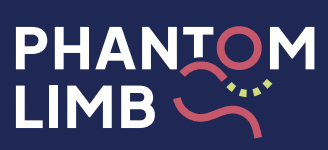
Virtual Reality (VR)
Step into the fascinating realm of Virtual Reality (VR) – an innovative approach that offers not just relief but a new dimension of empowerment for those facing the challenges of phantom limb pain.

transcutaneous Electrical Nerve Stimulation (TENS)
Let’s take a look into the world of Transcutaneous Electrical Nerve Stimulation (TENS) – a cutting-edge approach offering potential relief and control for those grappling with phantom limb pain.

Sensory discrimination training (sdt)
Have you ever heard of or wondered what Sensory Discrimination Training (SDT) is? Well, think of it as a personalised journey to rewire your brain’s perception of your missing limb. It’s all about reuniting the senses and reshaping the way your brain interprets touch, pressure, temperature, and movement. Sounds intriguing doesn’t it?

meditation
Alright, let’s talk meditation – that cool practice that helps you give your mind a little spa day. It’s all about mindfulness, focus, and relaxation techniques that lead to a zen state. Think of it as training for your brain, showing it how to shift away from pain and stress, making room for emotional balance and relief.

Acupuncture
Are you ready to dive into the world of acupuncture? If you haven’t tried it yet, let me just start off by saying it’s not as daunting as you might think. Picture this: super fine needles carefully inserted into specific points of your body. These spots, often called acupuncture points or meridians, are like a GPS for your body’s energy, known as “Qi.” With these needles doing their thing, acupuncture is all about finding balance and healing.

Neurostimulation treatment (deep brain stimulation)
Alright, let’s delve into the world of Deep Brain Stimulation (DBS). Picture this: precise placement of tiny electrodes in specific brain regions linked to pain perception. These electrodes deliver gentle electrical pulses, aiming to change how your brain processes pain signals. I guess you could say it’s like a high-tech dance of impulses and perceptions to bring you comfort. Pretty impressive, right?

Spinal cord stimulation
Ok, let’s delve into the world of Spinal Cord Stimulation (SCS) – a futuristic approach that holds the promise of relief from phantom limb pain. Imagine this: electrodes gently placed along your spine, sending carefully controlled electric pulses. It’s like a symphony of signals that aims to change how your brain perceives pain. Pretty mindblowing isn’t it?

Massage
Let’s talk about something pretty incredible – massage therapy for phantom limb pain. It’s like a hug for your body and soul, offering relief and a boost to the well-being of amputees. Through the art of touch and skilled techniques, massage creates a world of relaxation and comfort, which can help you deal with the complexities of phantom limb sensations.

targeted muscle reinnervation (tmr)
Targeted Muscle Reinnervation involves surgically rerouting residual nerves from the amputated limb to nearby muscles that remain functional. This procedure aims to provide a new pathway for the brain to receive sensory and motor signals, effectively reducing phantom limb sensations.

The Importance of Physiotherapy
Physiotherapy is an important part of rehabilitation. It can help you regain movement and function after an injury or illness or amputation. Physiotherapy can also help reduce pain and improve quality of life.
If you’ve had an amputation it is important to start physiotherapy as soon as possible after the surgery. Physiotherapy can help you learn how to use your new limb and adapt to your new body.

Mirror Box Therapy
Mirror box therapy is a type of rehabilitation that uses visual illusions to help reduce phantom limb pain. The therapy involves placing the affected limb in a box that has a mirror on one side. The other side of the box is left empty. This creates the illusion that the affected limb is actually still there.
